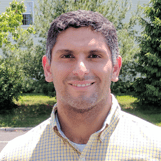About the Webinar
PacBio long reads offer a distinctive advantage over short reads in that they can span long repeat regions, link variants spanning multiple kilobase, and offer higher consensus accuracy. Here, we will focus on how researchers are leveraging the benefits of long reads to complement or replace short reads. The Sequel system enables multiplexed, high quality, small genome assemblies to be produced from a single SMRT cell while also allowing for large genome de novo assemblies to be completed quickly. Low coverage human whole genome sequencing has facilitated analysis and discovery of a myriad of large structural variants. Multiplexed targeted resequencing on the Sequel allows extending amplicon sequencing to several kilobases thereby spanning highly complex, highly variable regions. Lastly, the various isoforms naturally present in the transcriptome can be interrogated using the Iso-Seq workflow. Collectively, the Sequel is enabling exploration of the complexities of the genome and transcriptome in new and valuable ways.
About the Presenter

Haythem is a life science professional with a passion for next-generation sequencing technologies and applications. His interests in NGS began during his time as a graduate student pursing a Ph.D. in Bioengineering from the University of California, San Diego. There, he generated, analyzed, and integrated multi-omic datasets to deeply characterize the genome organization of various microbial organisms in search of novel biological insights. Upon graduation, he worked for Thermo Fisher in the Ion Torrent applications team focusing on AmpliSeq panel development. Haythem is currently managing NGS Business & Strategic Partnerships at GENEWIZ.
